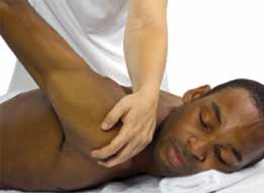
Your rotator cuff is a collection of muscles and tendons located where your upper arm meets your shoulder socket. Its primary purpose is to provide structural support to your body so that you can perform a wide range of arm movements, especially ones that involve overhead motion. These include manual labor activities—painting and carpentry, for example—and sports such as baseball and tennis. As a person ages, the likelihood of a rotator cuff tear increases.
While such tears are serious and require treatment, it may surprise you to learn that surgery is often not a necessary part of the healing process. Pain and muscular dysfunction can often be eliminated through physical therapy alone.
Determining whether or not surgery is necessary depends on the type of rotator cuff tear. The depth of the injury can be either full-thickness or partial-thickness.
- A full-thickness tear stretches clear through the tendon down to the bone.
- A partial-thickness tear is less severe and does not include a total separation of tissue.
In the case of a partial-thickness tear, physical therapy is often the only treatment necessary. For a full-thickness tear, surgery may be required if physical therapy alone is not sufficient for healing and function.
Regardless of whether or not surgery is required, physical therapy is a necessary part of treatment for rotator cuff injuries. We can teach you exercises that will strengthen your muscles and tendonsto help restore a range of motion and build muscle endurance. We can also help you to make the necessary lifestyle changes to avoid aggravating or injuring your cuff again.
Let us work with you and carefully monitor your progress. Physical therapy can postpone or eliminate the need for surgery altogether. And if surgery is needed, physical therapy can give you a faster and more complete recovery.









